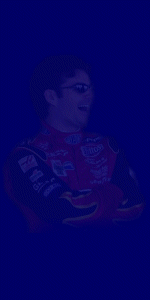![]()
|
|
|
|
|
|
|
|
|
|
|
The History of NASCAR,
Part 5
Previous
|
As NASCAR moved into it's new era, it needed something more to promote itself. Television was the answer to its problem, but broadcasting companies were reluctant to air an entire race. However, in 1976, the Daytona 500 was to be shown on TV live for the very first time, albeit the last five laps (Higgins, p. 88-91). Richard Petty and David Pearson were dueling for the win late in the race, as was usually the case in those days. Pearson passed Petty on the backstretch during the last lap. Petty dived low and his and Pearson's cars touched. Petty was almost past Pearson on the outside when the driver's two cars touched harder. Both cars spun out of control and into the wall. Petty's car stalled 100 feet short of the start finish line. As Petty tried desperately to get his car to start, Pearson's car was inching slowly to the finish line at twenty miles per hour to take the checkered flag and the win in the 1976 Daytona 500. David Pearson, winner of 105 races, was second in total wins only to Richard Petty, who called Pearson "the best there's ever been." Pearson, the driver also known as the "Silver Fox" because of his clever, strategic driving style, claimed a championship in 1966, ‘68, and ‘69 each. Finally, in 1979, CBS decided to air the entire Daytona 500 from start to finish. A huge snowstorm had half the country snowed in their houses with nothing else to do but watch TV. As the race wound down, the only two drivers to have a shot at winning were Cale Yarborough and Donnie Allison. Yarborough tried to pass Allison at the end of the backstretch, but Allison went left and tried to block Yarborough by pushing him toward the infield grass. Cale bumped Donnie twice, and the two cars went flying into the outside wall and slid back to a rest on the grass. Yarborough got out of his car and went over to the car of Bobby Allison, who had stopped after the race to check on his younger brother, and punched the elder Allison in the face through the window. By that time, Donnie had gotten out of his car and he and Yarborough were kicking, fighting, and swinging helmets at each other. Track workers had to break them up. Richard Petty, who was in third place and had no hope to win the race, being nineteen seconds behind, won his sixth Daytona 500. "The Fight" as it is now known, turned on thousands of viewers to NASCAR racing because they had seen the humanness and emotion of the drivers who had lost something that was of great importance. In fact, "The Fight" interested so many people that Newsweek used a picture of it for the front cover of their magazine a few days later. As NASCAR increased in popularity, competition was heating up on the track. As crew chiefs were trying to get more speed out of their cars for the drivers, they tried to "interpret" the rule book to find that extra edge that could be the difference between first or second place. NASCAR has always been very strict about dealing with cheaters, as evidenced by the many parts that officials confiscate. If the violation is severe, sometimes fines, penalties, and/or suspensions are used against the teams that break the rules. Another way that race teams improved their on-track performance was by perfecting the art of the pit stop. Teams started realizing that seconds saved changing tires and filling gas meant hundreds of feet gained on the track. Now, seven people, with air wrenches, special gas cans, and modified jacks, can do in fourteen to sixteen seconds what as many men used to do in several minutes with lug wrenches, buckets for gas, and a regular jack. Two people put gas in the car, two change front tires, two change the rear, one man jacks the car up, and sometimes an extra man can come over the pit wall to clean the windshield. To get pit stops into the fifteen second range, teams spend thousands of dollars by hiring fitness experts, building gyms in their shops, and making sure the air wrenches don't jam up during a crucial stop. The new trend in racing is to have the strongest, most athletic team members do only pit stops on race day. Pit crews make NASCAR racing a team sport. Many times, only the drivers see the spotlight for the accomplishments of the team that backs them. That's not to say that drivers don't do anything. They are the heart and soul of NASCAR racing. Dale Earnhardt, who ties Richard Petty for most championships at seven, and Jeff Gordon, a young driver who has earned 52 wins and has yet to turn thirty, are among the most popular drivers in a sport that is all about people. NASCAR wouldn't be where it is without the visionaries, the drivers, the teams, and the fans. NASCAR, second only to the NFL in television ratings, truly is America's sport. Surely as NASCAR looks back on its last fifty years, it has not forgotten where it has come from. Under the new leadership if Mike Helton, a new multi-million dollar television package, and a new generation of drivers such as Jeff Gordon, Bobby Labonte, Tony Stewart, Dale Jarrett, Dale Earnhardt, Jr., and Matt Kenseth, NASCAR can only look forward to more growth in the next 50 years. |
